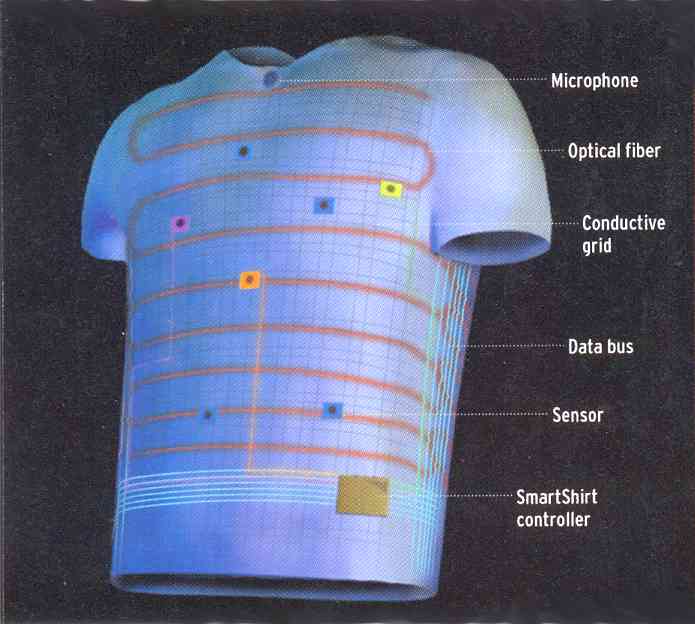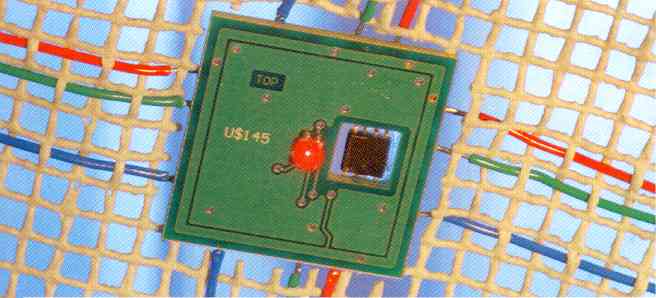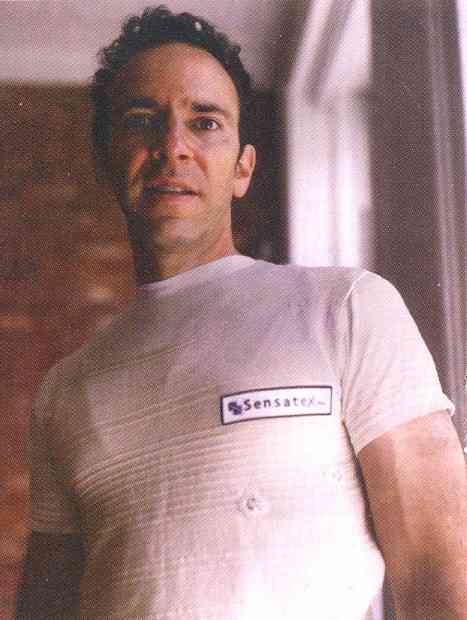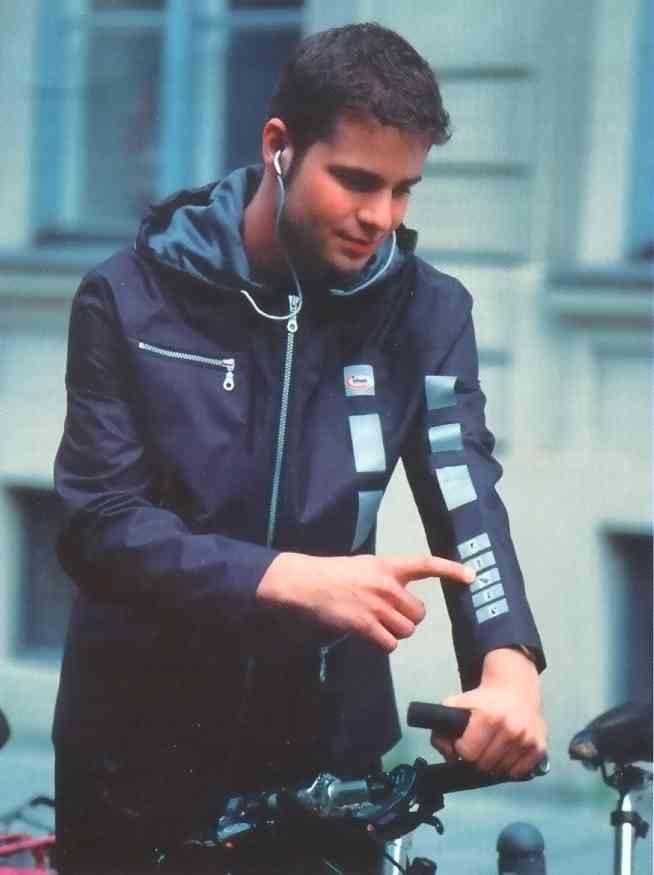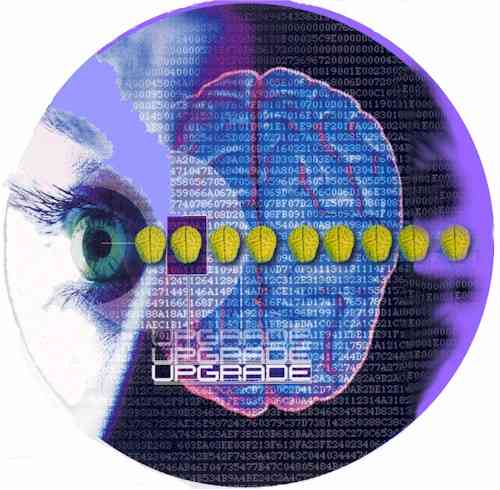Giant TV in Your Pocket
This Is UnrealA wide screen just makes a bad film twice as bad. - Samuel Goldwyn I made an attempt to update the section on this page concerning videoglasses. I discovered that there are many new offerings - but most said things like, "We plan to have a tv-quality version by the end of the year!" My impression is that this technology is still not quite mature, but is slowly progressing. I plan to wait a while longer before investing. Goodness Gracious
Slip on some Sony Glasstron audio/video glasses and the experience is unreal. Switch on your video source, and it's as if you're watching a 52-inch screen from just two metres away. At the same time you get amazing wraparound sound through the integrated stereo headphones. If you like total audio/video immersion, nothing matches Sony Glasstron. Carry the glasses with you and you'll have a giant TV screen wherever you go. Sony Glasstron glasses connect to TV, VCR, DVD player, camcorder, PlayStation, PC and most other video sources. NZ$1299 from Sony stockists. Source: Ansett New Zealand's in-flight magazine, Southern Skies, August 2000
In 2001 we visited a store on 5th Avenue in New York City where these glasses were for sale. To my disappointment, I found them to be quite rigid and very uncomfortable to wear. Sony: keep working on them, okay? Here's an excerpt from an online review:
Source: reviewfinder.com
Here are other attempts (which I have not tried and am not meaning to recommend):
Private DVD Theatre Puts Floating 6-foot Screen Right before Your Eyes
The latest electronic technology has created i-glasses, the virtual theater that provides private showing of DVD and other video sources. On a recent flight, a thunderstorm rolled in just as we were about to take off. We couldn't go back to the terminal, and the captain said we could not use cell phones or radios. All I had was a magazine, so I settled in for a long wait. "Well," I said to the woman seated beside me, "it looks like it's going to be a while." "That's fine with me," she said. "I've been dying to watch this film." I was about to break the news that there was no in-flight movie, when I glanced over and saw her wearing these futuristic goggles, laughing along with a movie only she could see. By the time we took off, seven passengers had asked to buy them. For your eyes only. It's been over a century since motion pictures were invented, and the industry has seen some dramatic changes. Now, an innovative electronics company has created the world's first personal movie theatre. By combining advanced image projection technology with the flawless digital signal of DVD, i-glasses may revolutionise the way we watch movies. The amazing "Televizer" is like having a private big-screen theatre. It features twin embedded LCDs with 375 lines of resolution and a 180,000-pixel display to create the illusion of an 80-inch screen floating 11 feet in front of you. You can use i-glasses with any video source, or, when you use them with the portable Pioneer DV-10, you can watch your favorite movies anywhere, anytime. Imagine the possibilities! This breakthrough product is perfect for everyone from frequent travellers to couples with different sleeping habits. You can even use i-glasses to watch a film while you're sitting in the dentist's chair. What's more, i-glasses are perfect for playing video games, including PlayStation and N64. Private virtual theatre. The all digital i-glasses are the ultimate private entertainment system to provide a virtual screening room. They shut out distractions during flights and while playing video games. The lightweight glasses feature over-the-ear headphones with stereo sound capability, foldable ergonomic frame design and an adjustable elastic head strap. The i-glasses connect to almost any video source and include the cables and adapters for a wide range of components. They accept both composite and s-video input, so you can view images generated by everything from a miniature TV to a laptop computer. The i-glasses have a multi-purpose rocker switch for volume control. The remarkable i-glasses are the personal, portable home theatre with a big screen view for business travelers and other individuals, as well as for powerful business presentations. Televizer includes i-glasses and Pioneer Portable DVD (California residents only, a 7.75% sales tax will be added to the order) Try the iGlasses today and receive our exclusive 30 day risk-free trial. iGlasses . . . . . . . . . . . . . . . . . $399.00 Source: comtrad.com/general/product Techno Scout
From their marketing literature, 2003... The High Resolution Portable Computer Monitori-glasses SVGA Pro is a wearable, portable, high-resolution monitor designed specifically for a wide variety of computer applications. Connect the SVGA Pro to any computer’s 15-pin VGA port for an instant, giant screen view in complete privacy – a simple yet effective solution to prying eyes in public places. Great for outdoor use with any laptop or portable computer where the "washout" effect caused by direct sunlight renders typical LCD screens useless (optional battery required). On the road, use i-glasses as an alternate monitor for watching DVDs on your laptop. Your travelling companion will appreciate them! i-glasses are compatible with nVidia-based graphics cards using stereo drivers. The SVGA Pro features a patented optical design that is comfortable for nearly all users with no adjustments necessary. The effect is equivalent to a 70 inch monitor viewed from 13 feet away. No other monitor can give you that kind of high-resolution image in a portable platform. i-glasses SVGA Pro – providing clear solutions for traveling professionals. Cost $1,200.
Rimax Virtual Vision Glasses 3.0Goggle box Price: £139.95
I hope he gets that nice leather chair inside before it rains... There's really only one drawback with flat screen TVs: the price. A 36-inch LCD will empty your bank account faster than a masked villain with a sawn-off and a bad attitude. Ok, so they might look tasty hanging on your wall and there's no denying the ‘wow' factor it gives your living room. There is another way, though, and one that does away with pesky interruptions during your favourite films. "So, err, how much was it then?" and "I'm thinking of getting a plasma, although the wife wants a new car" will be a thing of the past once you strap these puppies on. The Virtual Vision 3.0 glasses strap to your skull and deliver the equivalent view of a 36-inch TV direct to your quivering eye sockets. It sounds like witchcraft but we assure you it isn't. The Visions, you see, have an internal LCD screen, so not only do you get your very own personal cinema, you also have the best picture quality money can buy into the bargain. "And what of sound?" we hear you ask. Well, the fiendishly clever Vision 3.0s have that licked too, thanks to a set of stereo earphones that sit snugly in your ears while you're wearing the glasses. Perfect. And there'll be no accusations of Feng Shui abuse, either, since the glasses can be stowed neatly in a drawer or some such. Flat screen TVs? Pah, who needs ‘em… Main Features:
Customer Reviews: Average Review Score: 9.5
Source: paramountzone.com
Mind-Controlled Gaming Headset Unveiledby Andrew Ramadge
Emotiv to release a headset that lets the wearer play videogames simply by thinking A neuroheadset that allows the wearer to play videogames simply by thinking has been unveiled at the Game Developers Conference in San Francisco and will go on sale later this year. The Emotiv EPOC "brain-computer interface device" looks like a headphone strap with 14 neurosensors that branch off it like fingers. The sensors sit on the sides of the temple and top of the head. The device can detect conscious thoughts, areas of brain activity, facial expressions and even some emotions such as frustration, shock and anger, and will cost about $US300 ($326) when it is released in late 2008. The EPOC will ship with a range of games designed specifically for the headset, but gamers will also be able to use it with existing PC titles by mapping certain thoughts to keystroke patterns. "Being able to control a computer with your mind is the ultimate quest of human-machine interaction," said Emotiv Systems CEO, Nam Do. "When integrated into games, virtual worlds and other simulated environments, this technology will have a profound impact on the user’s experience." Gaming journalist Brian Crecente, who tried the EPOC at the conference, said the sensation of having his thoughts affect actions on the screen was "quite strange. To start you need to quickly synch your brain, teaching the computer to recognise the thought you use to perform the specific action. In my case I imagined the box in the centre of the monitor drifting away. After doing this for a second or two, while the program 'recorded' they asked me to give it a try and it worked. Imagining the box floating up off the top of the screen, I was surprised to see it waver and then slowly move upwards until it disappeared. I laughed in surprise and the box immediately dropped back down again." Emotiv also said it would work with computer giant IBM to explore potential business uses for the technology, including virtual training and simulation courses. "As interactions in virtual environments become more complex, mice and keyboards alone may soon be inadequate," said vice-president of IBM's digital convergence division Paul Ledak. "BCI (brain-computer interfacing) is an important component of the 3D internet and the future of virtual communication." Source: news.com.au/technology 22 February 2008 See also:
Today's Cyborgs Get an Eyefulby Janet Kornblurn Thad Starner is lying flat on his back on his office couch, staring at the ceiling. Don't bother him. He's working.
Starner's view through the "MicroOptical" display, as his particular brand is called, is that of a computer-screen display. He can see words, pictures - whatever you might see on a computer screen. Starner, assistant professor of computer science at the Georgia Institute of Technology, is as close as anyone comes these days to being a cyborg, short for cybernetic organism. He's not exactly like the Borg of Star Trek fame - humanoids who get assimilated into a giant collective and are controlled through mechanical implants. But those few individuals who consider themselves to be real-life cyborgs are not that far off. They tend to continuously wear their equipment - sewn into clothing, hidden in eyeglasses - sometimes conspicuously. And they use machines to seamlessly integrate cyberspace into daily life. Call them the extremely wired. While the rest of us are just getting used to a world where we carry cellphones, pagers and personal digital assistants, the cyborgs - mostly academic types - have been experimenting for years with a kind of life that allows them to be connected all the time. "It's like there's no difference between cyberspace and the real world," says Steve Mann, a cyborg pioneer who, at 38, has been making and wearing computers for 20 years. While cyborgs are talking to you, they also may be answering e-mail, looking up information on the Internet or altering the view of their environments. For instance, Mann, assistant professor of electrical and computer engineering at the University of Toronto, regularly alters his environment by superimposing different scenes, such as a garden, through the eye device he wears. The EyeTap device causes rays of eyeward-bound light to be replaced with rays of synthetic light having the same characteristics, Mann explains. The result? Mann can essentially broadcast a picture of a garden to his eye, so he sees a garden where others simply see what is there. (But no need to worry - he'd still see an oncoming car.) Mann's device also allows him to take pictures of his environment so that when he's at the grocery store, for example, his wife can use a remote device (like a computer) to see what Mann sees. She can actually circle the peach that she wants him to buy. "She can 'scribble' on my retina," Mann explains. "It's a very personal form of interaction." Wearable computer users also can link themselves in a sort of collective. So they might be "talking" to each other without speaking while across the room - or across the country. Most compulsively take notes so they can refer to them the next time they talk to you.
"You can't do that with a laptop or a PC. They're too intrusive." But, with a wearable PC, he can pretty much look you in the eye and take notes at the same time. "If I take notes, you won't even notice it." Today, you might not even know you're talking to a wearable computer user - an elite cadre of academics, many of whom got their start at the Massachusetts Institute of Technology's Media Lab, and students. It's difficult to estimate just how many are running around these days. It largely depends on whom you ask and how they happen to define a borg, from people who use simple devices to alter their environments to the other extreme, at which it's virtually impossible for an outsider to detect where the machine ends and the man begins. But it's safe to say there are dozens - maybe even hundreds - of them. And people who consider themselves cyborgs are quick to point out that a lot of us regular folks are dancing on the edges, if not tumbling to the centre, of borgdom. Wearable computers are being deployed everywhere from the military to the assembly line. Thousands of people depend on electronic pacemakers and cochlear implants, among other computerised health equipment. And an increasing number consider the addition of cellphones, pagers and PDAs part of daily dress. Starner says the day isn't far off when we'll all be wearing our devices. "Everybody takes for granted that something like this is going to happen," he says. Source: USA Today Monday 2 July 2001 photo credit Georgia Tech Communications For more information, see:
Ready to Ware
by Diana Marculescu, Radu Marculescu, Sungmee Park, and Sundaresan Jayaraman With cellphones hanging off shoulder bag straps, pagers hooked to our belts, digital cameras dangling from our necks, PDAs bulging in our pockets, and MP3 players clipped to our shirts, we're all beginning to look like electrogadget pack mules. We have a more versatile and, we dare say, elegant alternative: e-textiles. Your shirt, coat, or sweater, even your carpeting or wallpaper, is the device. Conductive fibres woven into the fabric using standard textile techniques carry power to sensors, actuators, and microcontrollers embedded in the cloth. Software controls the communications inside the on-fabric network and can send radio signals using Bluetooth or any flavour of the IEEE 802.11 wireless standard to PCs and PDAs, and over the Internet.
A flexible data bus in Sensatex's SmartShirt prototype carries signals from various sensors Applications are astoundingly diverse. An Army commander, for example, could monitor a platoon of soldiers clad in SmartShirt gear developed by two of us (Jayararnan and Park) at the Georgia Institute of Technology in Atlanta. The shirt communicates vital signs in real-time, and when all hell breaks loose on the battlefield, the commander sees at a glance who's been hit and who hasn't - and who is gravely injured and in need of immediate attention. Closer to home, a fire chief could keep tabs on a unit as it enters a burning building. He could order his team out when the sensors they're wearing transmit data back to his command center telling him that the firefighters are inhaling hazardous fumes or too much smoke or that the fire is too hot to handle. Imagine the boon to athletes. A swimmer stroking through the water, vital signs monitored e attached to wires hanging off her body like the tentacles of a jellyfish, would welcome a sleek, instrumented training suit. And five-time Tour de France winner Lance Armstrong, who lost an estimated 6.5 kg during the first individual time trial of this year's Tour, could have used a racing suit dotted with moisture, temperature, and pulse sensors. Such attire could have warned the US Postal Service team manager that Armstrong was becoming dehydrated as he was warming up. In turn, the manager could have ordered Lance to drink replacement fluids before he launched from the starting line on his way to a rare time-trial defeat. Similar performance- and safety-enhancing garb has already been prototyped by Finnish researchers at Tampere University of Technology and the University of Lapland, and at outerwear maker Reima Oy in Kankaanpaa, Finland. They developed a machine-washable jacket, vest, trousers, and two-piece underwear set for snowmobilers. The jacket is embedded with a GSM (Global System for Mobile Communications) chip; sensors monitoring position, motion, and temperature; an electric conductivity sensor; and two accelerometers to sense impact. If a crash occurs, the jacket automatically detects it and sends a distress message to emergency medical officials via Short Message Service. The message conveys the rider's coordinates, local environmental conditions, and data taken from a heart monitor embedded in the undershirt. Okay, you don't plan to join the Army, rush into a towering inferno, or compete in the Tour de France. You have no interest whatsoever in swimming and snowmobiling. Nevertheless, e-textiles are soon going to add functionality, fun, and style to whatever it is that you do like to do. Just last May, Gennan chipmaker Infineon Technologies AG, in Munich, and its partner, Vorwerk & Company Teppichwerke GmbH & Company, in Hamelin, unveiled a carpet that can detect motion - of unwanted intruders, for example - and also light the way to exits in the event of a fire. The carpet is woven with conductive fibers and studded with pressure, temperature, or vibration sensor chips, microcontrollers, and light-emitting diodes (LEDs) [see photo below].
Red wires supply voltaqe, qreen wires carry data, and blue wires are qround Last year France Telecom showed off a display made of woven optical fibres that can be worked in with standard textiles. A t-shirt or backpack could display text and images, including video and advertising logos, and could be adapted for colour-changing scarves and furnishings. And for those of us who cant stand looking at the same decor day in and day out, International Fashion Machines, co-founded by Massachusetts Institute of Technology alumna Maggie Orth, is commercia1ising Electric Plaid wallpaper. And when she says electric, she means electric: a swatch now on display at the Cooper-Hewitt National Design Museums National Design Triennial in New York City slowly changes colours and patterns as conductive fibres heat and then cool threads coated in thermally sensitive inks. These prototypes are a small sample of the vast variety of fibers and fabrics that can be woven into clothing, carpets, upholstery, and wallcoverings. Coupled with fault-tolerant computing and network architectures, such e-textiles can constitute a platform for health monitoring, communications, multimedia devices, and changing decors. Mother of all wearable motherboardsSome of these garments will be on the rack or on your local firefighter in the next five years. Infineon's carpet and International Fashion Machines' wallpaper should hit stores within the next coupIe of years, and perhaps a SmartShirt for infants will, too. Sudden infant death syndrome, or SIDS, extinguishes the lives of thousands of sleeping infants every year. An e-textile shirt from New York City-based Sensatex Incorporated promises to put an end to SIDS by alerting parents the moment a baby stops breathing [see photo]. With sensors that monitor heart and respiration rates and body temperature, the shirt will communicate wirelessly with a parent's PDA, watch, or PC.
A baby is swaddled in a SIDS suit prototype that detects when a child stops breathing and sends an alarm. The SmartShirt is the generic name journalists came up with in the late 1990s to describe the Wearable Motherboard, which Georgia Tech licensed to Sensatex [see photo]. In the computer world, motherboards are circuit boards that let you easily plug in chips and processors for specific applications, like graphics or wireless communications. Similarly, the Wearable Motherboard provides that kind of versatility for clothes. Manufacturers can mix and match sensors, processors, and communications devices that plug into knitted or woven garments made from cotton, polyester, or blends. The garments are threaded with conductive polymer and metallic fibres that serve as data buses and power lines.
The SmartShirt looks and feels like a typical garment. These devices have the look and feel of typical garments and, after the attachments are unplugged, can be tossed into the washing machine. The Wearable Motherboard was funded initially by the US Navy in 1996 as a garment to detect bullet wounds in combat. It is woven from a cotton and polyester blend as well as optical fibres that when severed will indicate exactly where a bullet has passed through. It also monitors the condition of the wearer with sensors to measure vital signs. In practice, the user will position the dime-sized sensors on his body and plug the leads into tiny connectors, which measure 5mm in diameter and look like snaps on blouses. Called T-Connectors, the sensors are placed in the appropriate spots - over the heart or diaphragm, say. Depending on the application, the garment could have dozens or hundreds of connectors. A flexible data bus integrated into the fabric routes data from the sensors to the SmartShirt controller, which uses a proprietary chip set, in a plastic package the size of a pager. Powered by a watch battery, the controller presses onto the fabric like a fastener to contact the conductive fibres. It processes the signals from the sensors to compute vital signs such as heart rate and wirelessly transmits the data directly to a PDA or PC using Bluetooth or IEEE 802.11b. Or the Vital signs data pops up on a display in the parents' bedroom, in the case of the SIDS shirt. But for other applications, the monitor might very well be at the doctor's office, in a hospital, or on the sidelines of a football field. Reliability through redundancyWeaving together a complex e-textile system challenges clothing designers and systems mavens alike. How should the sensors, processors, and controller fit together? What kind of software can we write to ensure fault tolerance and quality of service both within the garment and with external devices? Can we come up with a hierarchical design process akin to those used in the IC industry? Depending on the application and the physical area it covers, an electronic textile relies on dozens to hundreds of sensors and processing elements, each with limited processing, storage, and power consumption: up to 100-MHz processing speed, 64 KB or less of local memory, consuming up to a few tens of milliwatts. Clearly, these devices are not "desktops on a fabric"; nor are they cellphones, PDAs, or set-top boxes, in the sense that e-textiles must have low manufacturing costs. As a result, the devices will inevitably have more processors and interconnects that don't work than do other embedded systems. And unlike, say, a set-top box, clothes get worn, washed, and torn. Carpets get vacuumed, shampooed, and trod upon. That means e-textiles must be designed based on a fault-tolerant system that can cope with wear and tear. Thanks to Moore's Law, chips are cheap and will get cheaper, which makes redundancy the cost-effective key to reliability. Networking hundreds of processors, sensors, and controllers lets the garment automatically redistribute the workload around failed processors or improve the quality of service if it drops below a certain threshold. For example, many applications tolerate gracefully degrading quality when some percentage of the sensors or processing nodes fail. Take the swath of acoustic beam-forming fabric developed by researchers at Virginia Polytechnic Institute and State University, in Blacksburg, where an array of microphones woven into the material monitors the environment for audio signals that indicate the position of a tank. When the fabric's power supply runs down, techniques developed by Carnegie Mellon University's (CMU's) Coatnet research group (Marculescu and Marculescu) may come to the rescue. In the Pittsburgh-based Carnegie Mellon system, when one node starts to fail because of local battery depletion, a redundant node and accompanying battery take over computation and complete the task. The handoff happens transparently to the overall operation, staged carefully to avoid collisions on the communications bus when too many nodes rush to ship their computation to spares. With half the nodes redundant, the lifetime of the system can be extended by 80%, with no decrease in overall system quality. In the last few months, the Coatnet group has developed several prototypes targeted at safety and security applications. One prototype fabric uses processing nodes and embedded temperature sensors interconnected in an array to monitor, for example, the internal and external temperature of firefighters' suits. In the current prototype, one master node for data collection and eight additional slave nodes for sensing are interconnected in a grid to measure temperature over an area. All nodes run on simple Texas Instruments MSP430 microcontrollers, each running at up to 8 MHz, with a mere 64 KB of local memory and only 1 mW of power consumption. Eight additional nodes can be used as spares for the sensors to prolong application lifetime. The initial wearable version of the prototype works just as well for wallpaper that in the case of a fire "knows" which locations are too hot for firefighters to enter. Eventually, buildings could also be augmented with camera arrays inconspicuously embedded into wallpaper fabric to scan for intruders. In CMU's prototype, every sensing node uses small cameras and Atmel 8051 processors, running at 70 MHz and consuming up to 500 mW each, to analyse images for possible security breaches and then stream the video to a central display. Redundant devices keep the system running in case of local battery depletion or other types of failures. But while various projects have proved the feasibility of individual designs, none points to an overall methodology for the evaluation and validation of e-textile systems, something we need if a real industry is to grow around the technology. Today, when an engineer designs an ordinary IC, he maps the application onto a given platform architecture, under specified constraints - performance, area, and power consumption. Constraints met, testers put the prototype through its paces. Only after the device passes muster does full-scale manufacturing begin. But such a design methodology won't work with wide-area textile networks like those in carpeting. With e-textiles, partitioning the fabric holds the key to reliability and repeatability - in other words, manufacturability. By partitioning the application into small chunks computed locally, we can minimise communications among processing nodes. In doing that, we can decrease the possibility of congesting connecting links or losing data packets among communicating nodes or sensors. Designed properly, preprogrammed processing nodes can be reprogrammed when operating conditions change. For example, such a truly smart fabric could route data packets or control signals around a hole in a wounded soldier's uniform or a wet area of a baby's outfit. Will the fashionistas bite?
For playing MP3 files and recording memos, Infineon's concept audio jacket includes In the beginning, there won't be a single killer application to make this market flourish. Rather, niche applications like SIDS monitoring, military uses, or athletic training will get the ball rolling. Going from there to a wider consumer market will take more than a few teenagers' wanting to play MP3 tunes straight from their jackets. Perhaps multifunctional suits that would not only count calories but also change colour could spawn a larger market, or garments that authenticate you automatically and let you move easily from one secure environment to another. In some cases, privacy as well as safety issues will play a crucial role in swaying consumers' decisions. While these concerns apply to other consumer electronics, too, that hasn't stopped cellphones and PDAs from becoming the must-haves of modern life. And the convenience factor could well tip the scales in favour of a ready-to-ware revolution. After all, only in weird dreams do we leave home naked, but fully conscious we often step out sans cellphone. The authors wish to acknowledge the contributions of Pradeep K Khosla of Carnegie Mellon University and IEEE Spectrum senior associate editor Harry Goldstein. Source: IEEE Spectrum October 2003
Catching Crumbs from the Table
by Ted Chiang In the face of metahuman science, humans have become metascientists It has been 25 years since a report of original research was last submitted to our editors for publication, making this an appropriate time to revisit the question that was so widely debated then: what is the role of human scientists in an age when the frontiers of scientific inquiry have moved beyond the comprehensibility of humans? No doubt many of our subscribers remember reading papers whose authors were the first individuals ever to obtain the results they described. But as metahumans began to dominate experimental research, they increasingly made their findings available only via DNT (digital neural transfer), leaving journals to publish second-hand accounts translated into human language. Without DNT, humans could not fully grasp earlier developments nor effectively utilise the new tools needed to conduct research, while metahumans continued to improve DNT and rely on it even more. Journals for human audiences were reduced to vehicles of popularisation, and poor ones at that, as even the most brilliant humans found themselves puzzled by translations of the latest findings. No one denies the many benefits of metahuman science, but one of its costs to human researchers was the realisation that they would probably never make an original contribution to science again. Some left the field altogether, but those who stayed shifted their attentions away from original research and toward hermeneutics: interpreting the scientific work of metahumans. Textual hermeneutics became popular first, since there were already terabytes of metahuman publications whose translations, although cryptic, were presumably not entirely inaccurate. Deciphering these texts bears little resemblance to the task performed by traditional palaeographers, but progress continues: recent experiments have validated the Humphries decipherment of decade-old publications on histocompatibility genetics. The availability of devices based on metahuman science gave rise to artefact hermeneutics. Scientists began attempting to "reverse engineer" these artefacts, their goal being not to manufacture competing products, but simply to understand the physical principles underlying their operation. The most common technique is the crystallographic analysis of nanoware appliances, which frequently provides us with new insights into mechanosynthesis. The newest and by far the most speculative mode of inquiry is remote sensing of metahuman research facilities. A recent target of investigation is the ExaCollider recently installed beneath the Gobi Desert, whose puzzling neutrino signature has been the subject of much controversy. (The portable neutrino detector is, of course, another metahuman artefact whose operating principles remain elusive.) The question is, are these worthwhile undertakings for scientists? Some call them a waste of time, likening them to a Native American research effort into bronze smelting when steel tools of European manufacture are readily available. This comparison might be more apt if humans were in competition with metahumans, but in today's economy of abundance there is no evidence of such competition. In fact, it is important to recognise that - unlike most previous low-technology cultures confronted with a high-technology one - humans are in no danger of assimilation or extinction. There is still no way to augment a human brain into a metahuman one; the Sugimoto gene therapy must be performed before the embryo begins neurogenesis in order for a brain to be compatible with DNT. This lack of an assimilation mechanism means that human parents of a metahuman child face a difficult choice: to allow their child DNT interaction with metahuman culture, and watch him or her grow incomprehensible to them; or else restrict access to DNT during the child's formative years, which to a metahuman is deprivation like that suffered by Kaspar Hauser. It is not surprising that the percentage of human parents choosing the Sugimoto gene therapy for their children has dropped almost to zero in recent years. As a result, human culture is likely to survive well into the future, and the scientific tradition is a vital part of that culture. Hermeneutics is a legitimate method of scientific inquiry and increases the body of human knowledge just as original research did. Moreover, human researchers may discern applications overlooked by metahumans, whose advantages tend to make them unaware of our concerns. For example, imagine if research offered hope of a different intelligence-enhancing therapy, one that would allow individuals to gradually "upgrade" their minds to a level equivalent to that of a metahuman. Such a therapy would offer a bridge across what has become the greatest cultural divide in our species' history, yet it might not even occur to metahumans to explore it; that possibility alone justifies the continuation of human research. We need not be intimidated by the accomplishments of metahuman science. We should always remember that the technologies that made metahumans possible were originally invented by humans, and they were no smarter than we. Ted Chiang is an occasional writer of science fiction. His latest story can be found in the anthology Vanishing Acts, published by Tor Books. Source: Nature Volume 405 1 June 2001 from their excellent "Futures" column; they may be found on the web at www.nature.com - in my humble opinion, Nature continues to be a magazine well worth reading. See also:
For IT-related articles on snooping, usage, the future, e-diaries, piracy, flickers, cyborgs, browsing, trends, jokes, philosophic agents, artificial consciousness and more, press
the "Up" button below to take you to the Index page for this Information and Technology section. |
 Animals
Animals Animation
Animation Art of Playing Cards
Art of Playing Cards Drugs
Drugs Education
Education Environment
Environment Flying
Flying History
History Humour
Humour Immigration
Immigration Info/Tech
Info/Tech Intellectual/Entertaining
Intellectual/Entertaining Lifestyles
Lifestyles Men
Men Money/Politics/Law
Money/Politics/Law New Jersey
New Jersey Odds and Oddities
Odds and Oddities Older & Under
Older & Under Photography
Photography Prisons
Prisons Relationships
Relationships Science
Science Social/Cultural
Social/Cultural Terrorism
Terrorism Wellington
Wellington Working
Working Zero Return Investment
Zero Return Investment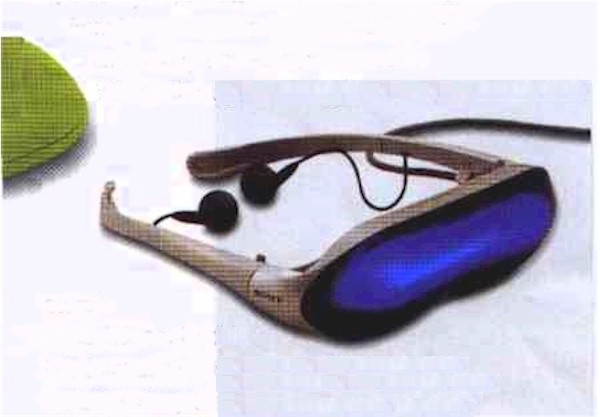
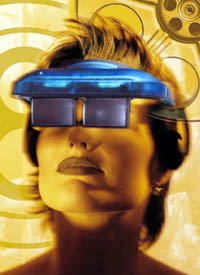

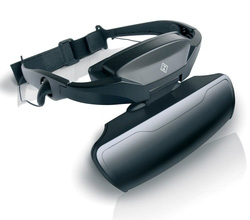

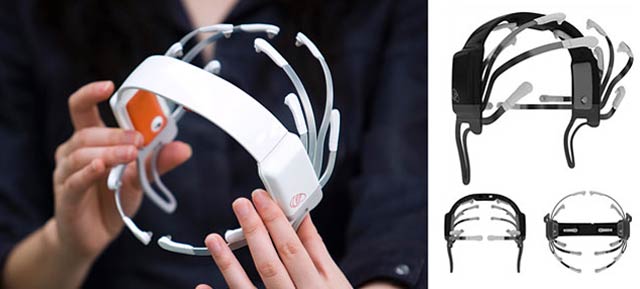
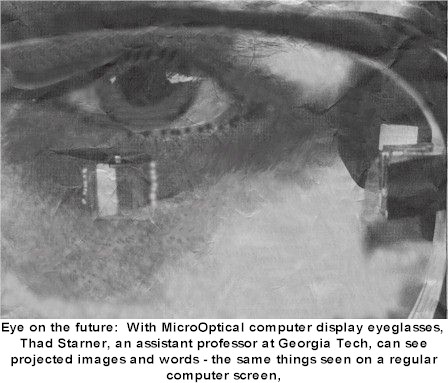 If you were to walk in on him, you might not know that - at first. But a closer look would
reveal the signs: The fingers of his left hand are gliding over a funny little one-handed keyboard called a Twiddler. His glasses aren't just ordinary help-you-see glasses;
attached to them is an actual monitor, about the size of a Chiclet.
If you were to walk in on him, you might not know that - at first. But a closer look would
reveal the signs: The fingers of his left hand are gliding over a funny little one-handed keyboard called a Twiddler. His glasses aren't just ordinary help-you-see glasses;
attached to them is an actual monitor, about the size of a Chiclet.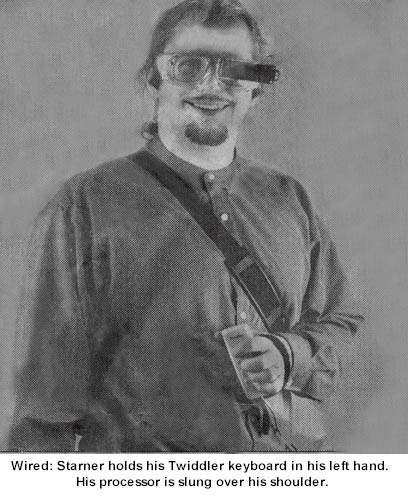 Wearable computer users may seem like geniuses, able to pull information seemingly from the
air. For instance, Starner, an Atlanta resident and a co-founder of wearable computer company Charmed Technology, based in Santa Monica, California, says he has been able to use
his wearable computer to pull up data on the go so he can customise his pitches to venture capitalists when he's trying to get money for Charmed.
Wearable computer users may seem like geniuses, able to pull information seemingly from the
air. For instance, Starner, an Atlanta resident and a co-founder of wearable computer company Charmed Technology, based in Santa Monica, California, says he has been able to use
his wearable computer to pull up data on the go so he can customise his pitches to venture capitalists when he's trying to get money for Charmed.
